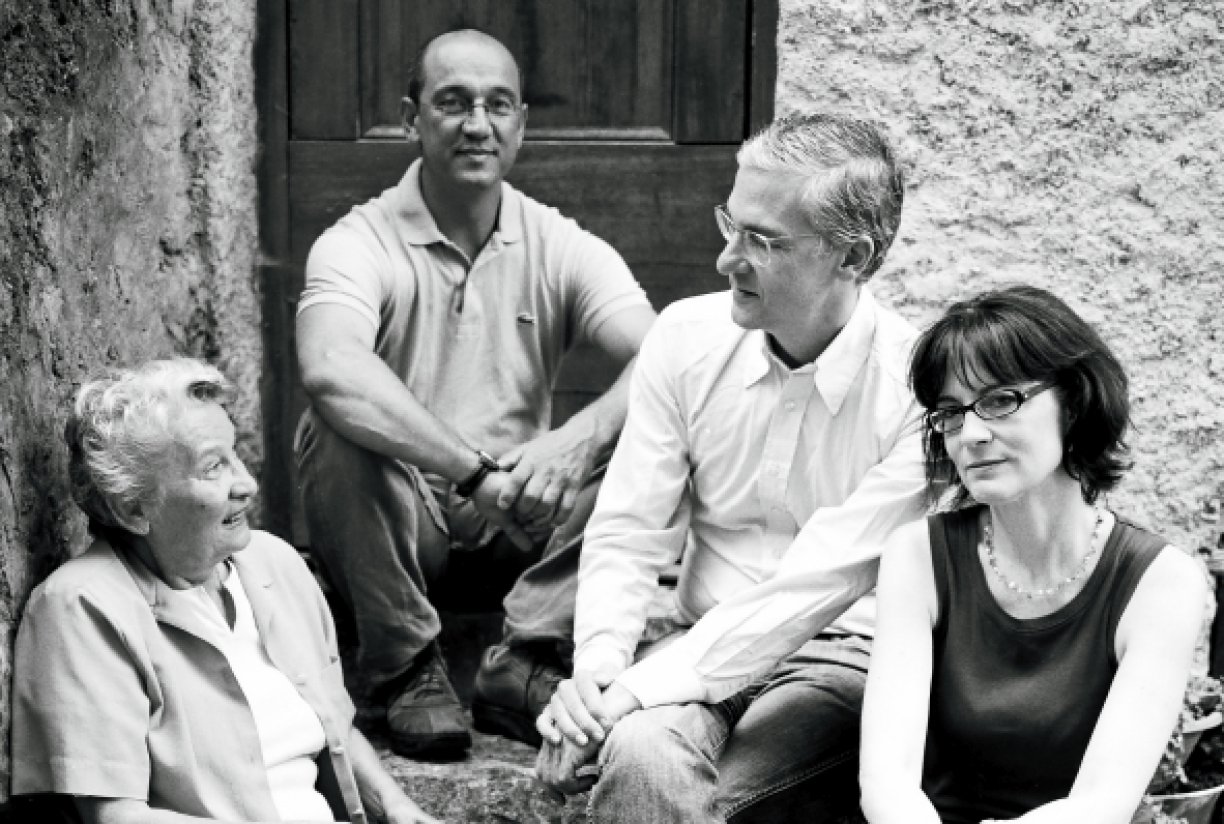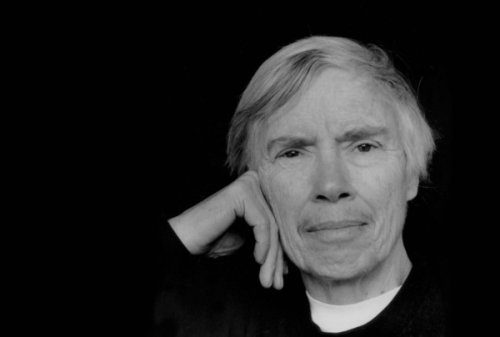Co-presented by Crossing the Line, the fall festival of the French Institute Alliance Française (FIAF). Crossing the Line is the fall festival of the French Institute Alliance Franyaise (FIAF), conceived as a platform to present vibrant new works by a diverse range of transdisciplinary attists working in France and New York City. Crossing the Line 2010 takes place September 10-27.
Eliane Radigue introduces the New York premiere of her 2009 acoustic composition Naldjorlak, a two and a half hour work in three movements. The concert marks only the 3rd performance in ISSUE Project Room’s future home at 110 Livingston: a McKim Mead & White-designed jewel box theater, featuring marble floors and 40-ft high vaulted ceilings.
Naldjorlak - After more than 30 years of infinitely discrete electronic music, Eliane Radigue abandons her cherished Arp 2500 synthesizer to devote herself entirely to acoustic composition. Monumental in length but delicate due to the acoustic treatment of the pulsing and murmuring sounds, Naldjorlak is conceived as a trilogy with incredibly subtle harmonics, sub-tones and partials interacting continuously. The piece is elaborated in close collaboration with three virtuoso musicians: cellist Charles Curtis and basset horn players Carol Robinson and Bruno Martinez.
The suspension of time, the dialog with eternity, the proximity to silence, an appeal to contemplation, and exceptional concentration... all that has characterized Eliane Radigue’s music since 1970, is now more relevant than ever. But, Naldjorlak takes her even further on her musical journey, because with these three performers, she has found the ideal means of coming ever closer to the “impalpable chimerical” music of her dreams.
Born in Paris, Eliane Radigue studied electroacoustic music techniques at the Studio d'essai at the RTF, under the direction of Pierre Schaeffer and Pierre Henry (1957-58). She was married to the artist Arman and devoted ten years to the education of three children, deepening classical music studies and instrumental practice on the harp and piano at the same time. In 1967-68 she worked again with Pierre Henry, as his assistant at the Studio Apsome.
Radigue worked for a year at the New York University School of the Arts in 1970-71. Her music, sourced from an Arp synthesizer and recorded on tape, attracted considerable attention for its sensitive, dappled purity. She was in residence at the electronic music studios of the University of Iowa and California Institute of the Arts in 1973. Becoming a Tibetan Buddhist in 1975, Radigue went into retreat, and stopped composing for a time. When she took up her career again in 1979, she continued to work with the Arp synthesizer which has become her signature. She composed Triptych for the Ballet Théâtre de Nancy (choreography by Douglas Dunn), Adnos II & Adnos III, and began the large-scale cycle of works based on the life of the Tibetan master, Milarepa.
In 1984 Radigue received a "bourse à la creation" from the French Government to compose Songs of Milarepa, and a "commande de l'état" in 1986 for the continuation of the Milarepa cycle with Jetsun Mila. Notoriously slow and painstaking in her work, Radigue has produced in the last decade or so on average one major work every three years. Very recently, in response to the demands of musicians worldwide, she has begun creating works for specific performers and instruments together with electronics. The first of these was for bass player Kaspar Toeplitz, and more recently the American cellist Charles Curtis.
Cellist Charles Curtis performs a unique repertoire of major solo works created expressly for him by La Monte Young, Alvin Lucier, Éliane Radigue and Alison Knowles, rarely-heard compositions by Terry Jennings and Richard Maxfield, and works by Cardew, Wolff, Feldman and Cage. La Monte Young and Marian Zazeela's four-hour long solo composition, Just Charles and Cello in the Romantic Chord, has been heard in Paris, Berlin, Lyon, New York, Dijon, Polling and Bologna. Éliane Radigue's recent Naldjorlak for solo cello has received over thirty performances worldwide and, as part of a new trilogy, was premiered in the Auditorium of the Musée du Louvre in October of 2009. Lucier's compositions for Curtis include music for cello and piano, cello and sine waves, and solo cello with large orchestra. A former faculty member at Princeton University, and for eleven years the first solo cellist of the NDR Symphony Orchestra in Hamburg, Curtis is now professor for contemporary music performance at the University of California, San Diego, and tours and records internationally. In the Bavarian village of Polling Curtis performs and teaches every summer in the Regenbogenstadl, a space devoted to the work of La Monte Young and Marian Zazeela. His performances in recent seasons have taken him to the Guggenheim in New York, the CAPC in Bordeaux, the Galerie Renos Xippas in Paris, the MaerzMusik Festival in Berlin, Dundee Contemporary Arts, the Kampnagelfabrik in Hamburg, the Emily Harvey Foundation in New York, as well as Chicago, Ferrara, Austin, Los Angeles and Harvard University. He continues to perform and record the traditional repertoire for cello, both as soloist and as artistic director of the chamber music project Camera Lucida.
Composer and clarinetist Carol Robinson has a multifaceted musical life. Equally at ease in the classical and experimental realms, she performs in major concert halls and international festivals (Wien Modern, RomaEuropa, MaerzMusik, Huddersfield, Archipel, Musica, Musica Contemporanea, etc.). In addition to working closely with composers, she pursues the new in more alternative contexts, collaborating with video artists, photographers, and musicians from divers horizons. Improvisation is her passion. Carol Robinson plays all types and sizes of clarinets, including more exotic instruments such as the Lithuanian birbyne.
She began composing by writing for her own music theater productions, subsequently receiving commissions for concert pieces, installations, radio, dance and film productions. Her works often combine acoustic sounds with electronics, and her musical aesthetic is strongly influenced by a fascination for aleatoric systems. Particularly interested in dance, she has collaborated with choreographers Susan Buirge, Nadège MacLeay, Thierry Niang, François Verret, and Young Ho Nam. In 2008, she was awarded a composition fellowship from the Civitella Ranieri Foundation in Umbertide, Italy.
Bruno Martinez was born on September 13, 1963 in Maubeuge, France. Principal Bass Clarinetist at the Paris Opera since 1992, he has performed with conductors such as Pierre Boulez, Seiji Ozawa, Charles Dutoit, Kurt Sanderling, Myung Wung Chung, Armin Jordan, Georges Prêtre, James Conlon, Gennady Rozhdestvensky, Witold Lutoslawski, Yehudi Menuhin, Valery Gergiev, Esa Pekka Salonen, Bernhard Haitink, Semyon Byshkov, Christoph von Dohnanyi, and others.



